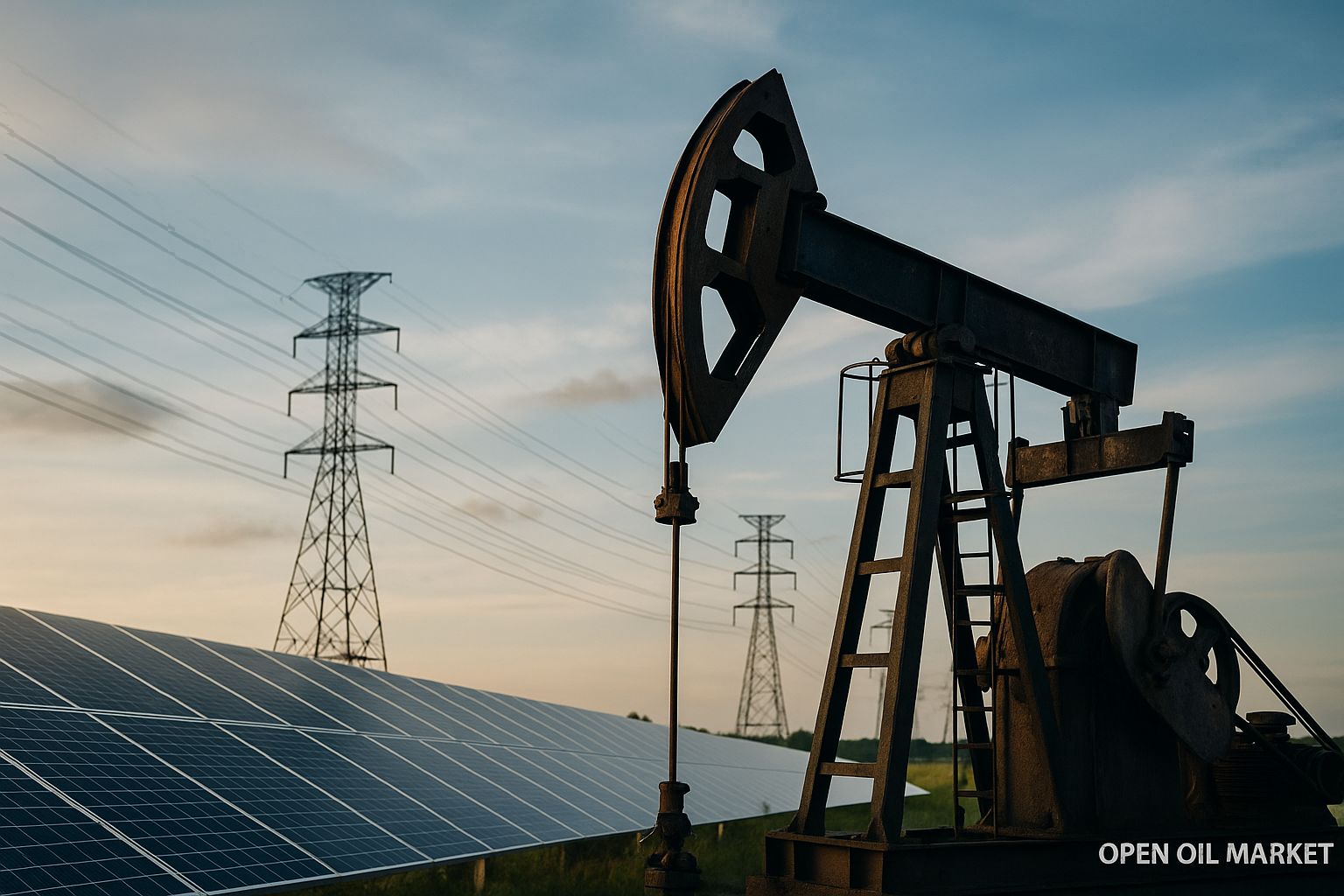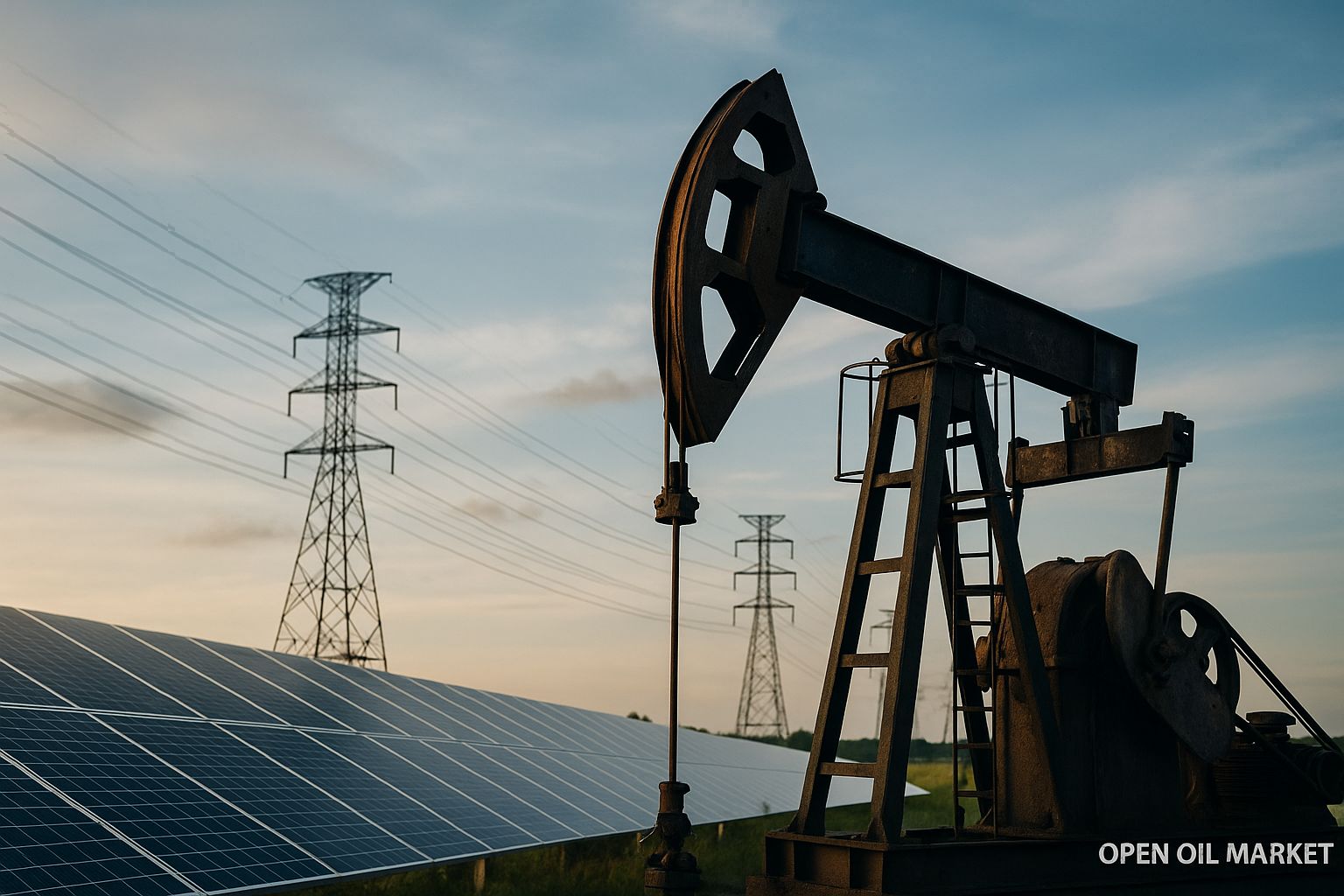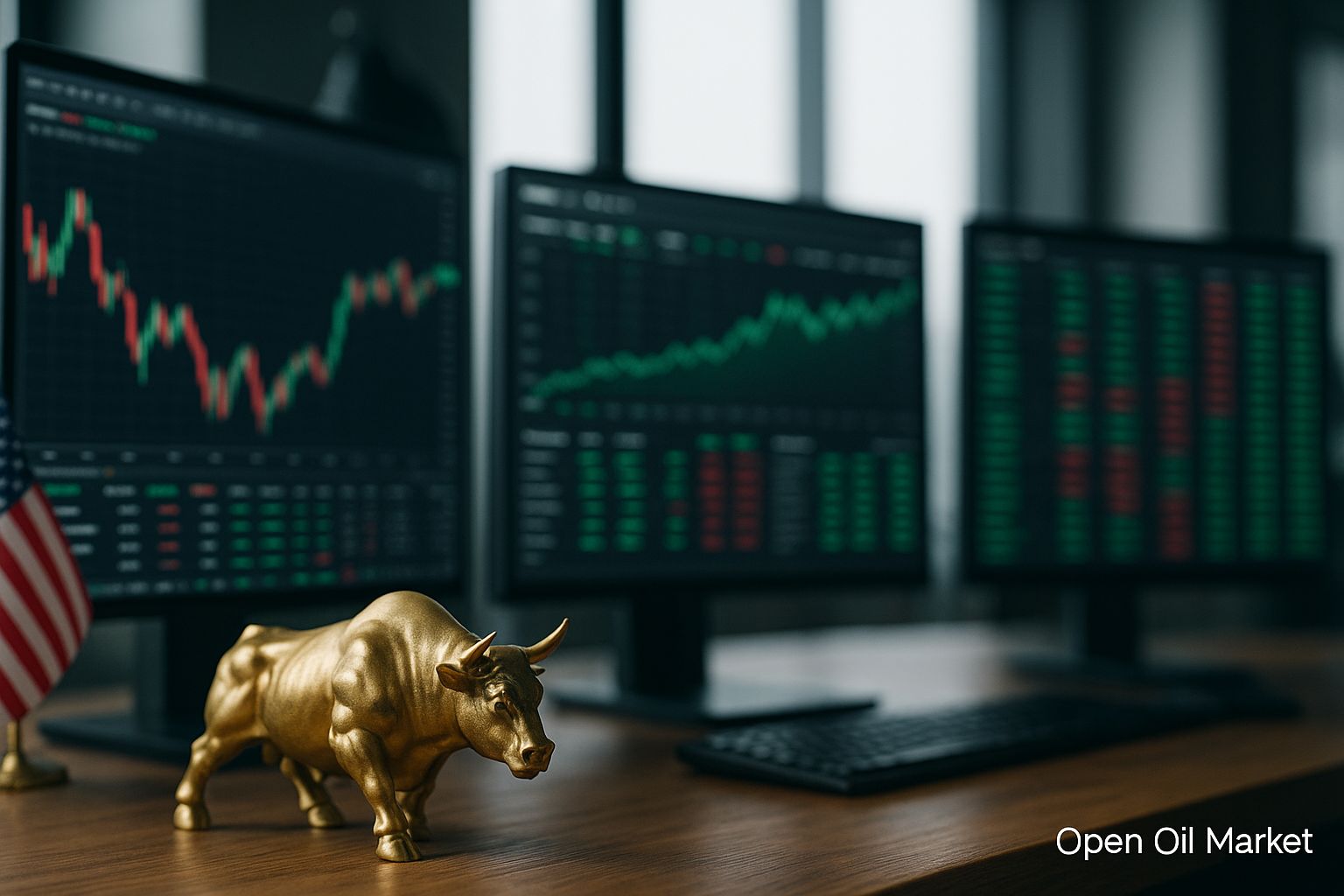
Detailed Overview of Fuel and Energy Sector News as of August 27, 2025: Situation on the Oil Products Market, Oil and Gas, Coal, Electricity, and Renewable Energy Sources. Analysis of Global Trends and Expert Commentary on Fuel Market Prospects.
The current events in the fuel and energy complex (FEC) as of August 27, 2025, present a mix of divergent signals for investors and market participants. Diplomatic efforts to resolve the crisis remain in a stalemate following the historic meeting between the Presidents of Russia and the United States in mid-August – no breakthroughs were achieved, and expectations for easing sanctions remain unfulfilled. Conversely, Washington shows readiness to tighten restrictions, while European allies approach energy sanctions with increasing caution, preferring to refrain from additional measures against Russian oil and gas exports. As a result, geopolitical uncertainty persists, casting a shadow over global energy markets.
Against this backdrop, the global oil market is showing signs of stabilization after the summer slump. Prices for benchmark Brent oil are hovering around the psychologically significant mark of $70 per barrel, recovering some losses from recent weeks. The European gas market is once again facing rising prices ahead of the winter season – despite record storage levels, traders are factoring in risks of potential supply shortages into their bids. Concurrently, the global energy transition is gaining momentum: many countries are recording new records for renewable energy generation, although for the reliability of energy systems, governments have yet to forgo traditional resources.
In Russia, after a recent spike in fuel prices, authorities are continuing to take measures to stabilize the domestic market. A significant turning point is expected in the coming month: according to government estimates, in September gasoline production volumes will exceed domestic consumption, which should eliminate shortages and cool prices. Below is a detailed overview of key news and trends in the oil, gas, electricity, and commodity sectors as of this date.
Oil Market: Price Rises Amid Moderate Demand and Excess Supply
Global crude oil prices at the end of August demonstrate an upward trend following a decline. The North Sea Brent crude stabilized around $68–70 per barrel, returning to levels from early summer. American WTI is trading around $64–65 per barrel. This marks the first noticeable price increase in the past three weeks, although current quotes remain approximately 10% lower than last year. The state of the oil market is being influenced by several conflicting factors:
- Increase in Production from OPEC+: The oil alliance continues to gradually increase production. In August, the aggregate quota of key participants was raised by approximately 0.55 million barrels per day; a similar increase is expected in September. The lifting of restrictions that have been in place since 2022-2023 is leading to an increase in global oil and petroleum product stocks.
- Slowing Demand: The growth rate of global oil consumption has significantly slowed. According to the updated forecast from the International Energy Agency (IEA), demand will only increase by ~0.7 million barrels per day in 2025 (in 2023, the growth was 2.5 million b/d). OPEC is also revising its forecasts: an increase of about 1.2–1.3 million b/d is expected in 2025. The reasons are the slowdown of economies and high prices from previous years that stimulated energy conservation, as well as weakened industrial activity in China.
- Geopolitical Tension: The prolonged conflict and sanction standoff add risks to the market. The lack of progress in negotiations regarding Ukraine means that strict Western sanctions against Russia will remain in place, which supports prices. On the other hand, the mere fact of periodic contacts between leaders somewhat eases panic, keeping prices within a relatively narrow range – without sharp rallies or crashes.
Collectively, the predominance of supply over demand is creating a situation close to a surplus in the oil market. Despite the recent increase, prices remain significantly below peak values from 2022–2023. A number of analysts suggest that if current trends continue, next year the average price for Brent could fall to $55–60 per barrel. Key indicators for the oil market in the coming months will be OPEC+ decisions, the dynamics of the global economy, and developments in geopolitical events.
Gas Market: High Stocks Do Not Preclude Price Spikes
The focus of the gas market continues to be Europe. EU countries rapidly filled underground storage facilities throughout the summer, preparing for the fall-winter period. Currently, European UGS facilities are over 92% full – much higher than the target benchmark of 90% by the start of November. Such record stocks have previously held prices down, but the approach of winter once again contributes to volatility. Amid the lack of signs indicating a swift resolution to the conflict, traders are factoring in risks of disruptions in supply. Additionally, at the end of August, another stage of technical work began at Norwegian North Sea fields, temporarily reducing gas exports from Norway.
As a result, gas market quotes in Europe have turned upward. Futures for the coming month at the Dutch TTF hub exceeded $400 per thousand cubic meters, reaching approximately €38 per MWh – a maximum for the past month. Over the week, prices increased from about $380 to approximately $410 per thousand cubic meters, ending several weeks of consistent declines. Although current levels are far from the peaks of 2022, the market remains sensitive to any risk factors. The EU is still forced to compensate for the shortages in Russian pipeline gas with record imports of liquefied natural gas (LNG), competing with Asia for LNG at high prices. It is worth noting that the pace of stock replenishment this summer has already lagged behind last year’s figures (due to the proximity of storage to maximum capacity), so the room for further price smoothing is limited. Overall, experts expect that uncertainty surrounding future deliveries and weather conditions will maintain elevated volatility in the gas market during the fall and winter.
International Politics: Negotiations Stalled, Sanctions Intensified
Nearly two weeks have passed since the meeting of the Presidents of Russia and the U.S. in Alaska, yet tangible progress in resolving the conflict has not been achieved. The dialogue is essentially frozen – the next meeting or direct negotiations between Russia and Ukraine are currently not in sight. Against this backdrop, expectations for further tightening of sanctions are growing. Experts note: the less realistic a quick peace appears, the higher the likelihood of new Western restrictions on Russian energy resources and the economy.
Signs of increased sanction pressure have already manifested. Washington has moved from words to action, applying unprecedented measures against one of Moscow’s major partners. U.S. President Donald Trump ordered on August 27 to raise tariffs on a range of Indian goods by 25 percentage points (to 50%) as punishment for India’s continued import of Russian oil. This move has marked a new escalation in sanctions policy, signaling that other major consumers of Russian energy resources might also come under attack. India has expressed disappointment with the sudden increase in tariffs, stating that its purchases of Russian oil are dictated by national interests and cannot be abruptly reduced.
Conversely, U.S. European allies are showing restraint regarding energy sanctions. According to press reports, the new (twelfth) package of sanctions being discussed in Brussels will not include additional restrictions on the import of Russian energy resources. The EU is effectively passing the initiative for tough measures to Washington, recognizing the dependence of several countries on critical resources. Consequently, the sanctions standoff remains intense: the U.S. continues to pressure buyers of Russian oil and gas, while Europe avoids radical steps, fearing negative consequences for its own market.
Simultaneously, media reports have emerged regarding backdoor discussions of potential energy deals between Moscow and Washington, which could become part of peace negotiations. In particular, according to sources from Reuters, U.S. and Russian representatives discussed in August the idea of American company ExxonMobil returning to the Sakhalin-1 project, as well as discussed supplies of American equipment for Russia's LNG project “Arctic LNG 2.” Additionally, an unconventional deal was proposed – the U.S. purchasing Russian nuclear icebreakers, unique in their kind, for joint use in the Arctic. These initiatives could have nudged the parties towards compromise and partial sanctions relief. However, no specific agreements were reached, and following the summit in Anchorage, the parties were unable to announce any "sensational" joint projects. Ultimately, geopolitical tension continues to weigh on FEC markets, leaving little room for optimism in the near future.
Asia: India Seeks Energy Independence, China Increases Imports and Production
- India: Despite unprecedented pressure from the West, New Delhi is in no hurry to renounce lucrative Russian energy resources. The country has explicitly stated its unwillingness to abruptly reduce imports of oil and fuel from Russia, as these supplies are critical to its economy. Indian companies have managed to secure substantial discounts from Russian suppliers: the Urals grade is traded to India at approximately $5 lower than Brent, which allows large volumes to continue to be purchased. Moreover, imports of Russian oil products into India are rising, satisfying the increased domestic demand for diesel and gasoline. At the same time, Indian authorities are taking steps to decrease long-term dependence on imports. Prime Minister Narendra Modi announced on Independence Day (August 15) the launch of a large-scale program for exploring deep-water oil and gas fields. The state-owned ONGC has already begun drilling ultra-deep wells (up to 5 km) in the Andaman Sea – early results are encouraging. The goal of the program is to open new hydrocarbon reserves and bolster the country's energy security. Additionally, on August 21 during a meeting of foreign ministers in Moscow, India and Russia agreed to deepen trade-economic cooperation, signaling that New Delhi intends to maintain energy ties with Moscow despite external pressure.
- China: The largest economy in Asia is also actively purchasing energy resources while simultaneously investing in boosting its production. Beijing has not joined sanctions against Moscow and has used the situation to increase raw material imports at reduced prices. According to customs statistics, in 2024, China imported approximately 212.8 million tons of oil and 246.4 billion cubic meters of gas – this is an increase of 1.8% and 6.2% compared to the previous year. In 2025, energy resource imports continue to grow, although at a more moderate pace due to economic slowdown. Additionally, China is increasing domestic oil and gas production, striving to reduce dependence on imports. Despite record volumes of renewable energy sources, the country still relies on traditional sources to meet baseline demand. The Chinese government is investing significantly in geological exploration and extraction technologies to develop new fields. Thus, India and China – the two largest consumers in Asia – maintain a key role in global commodity markets, combining strategies for import diversification with the development of their own resource base.
Energy Transition: Record Renewable Generation and Support for Traditional Energy
The global transition to low-carbon energy is maintaining its pace. Several countries are achieving record levels of electricity generation from renewable sources (RES). For 2024, Europe’s total generation from solar and wind power surpassed generation on coal and gas power plants for the first time. This trend continued in 2025: new capacity additions are further increasing the share of green electricity in the EU’s energy balance while the share of coal is declining after a temporary increase during the 2022-2023 crisis. In the U.S., renewable energy is also reaching new heights – at the beginning of 2025, more than 30% of all electricity was produced from RES, with total solar and wind generation for the first time exceeding production from coal power plants. China, the world leader in installed RES capacity, introduces tens of gigawatts of solar panels and wind turbines yearly, continuously updating its records for green generation.
Massive investments are accelerating the energy transition. According to IEA estimates, total investments in the energy sector in 2025 will exceed $3.3 trillion, more than half of which is directed towards RES projects, grid modernization, and energy storage systems. In the U.S., around 33 GW of new solar power plants are planned for commissioning within a year – a record figure making up almost half of all newly installed generating capacities. Nevertheless, energy systems still rely on traditional generation for network stability. The growing share of solar and wind raises challenges for balancing: during hours when RES do not generate energy, backup is required, and gas or even coal power plants must take on the load. During the last heating season, certain European countries had to temporarily ramp up electricity production from coal power plants during windless weather, despite the environmental costs. To mitigate these risks, governments are investing in energy storage systems (industrial batteries, pumped hydro storage) and smart grids capable of flexibly managing consumption. Experts predict that by 2026-2027, renewable sources may take the lead in global electricity generation, ultimately surpassing coal. However, in the coming years, classic power plants will remain significant – they are essential as insurance against outages and peak loads. Thus, the energy transition is reaching new heights but requires a delicate balance between green technologies and traditional resources.
Coal: Stable Demand Supports the Market
Despite the rapid growth of RES, the global coal market retains stability thanks to still high demand. The need for coal is particularly pronounced in the Asia-Pacific region, where economic growth and energy consumption support the intense use of this resource. China – the world's largest consumer and producer of coal – is forecasted to extract over 4 billion tons in 2025, meeting the lion’s share of internal demand. Nevertheless, this volume barely suffices during peak periods (e.g., during hot summers with widespread use of air conditioning), and the country continues importing coal as a contingency. India, possessing substantial reserves, is also increasing coal consumption: over 70% of its electricity is still generated from coal power plants, and absolute consumption rises in tandem with the economy. Other developing countries in Asia (Indonesia, Vietnam, Bangladesh, etc.) continue constructing new coal power plants to meet the growing needs of their populations and industries.
Global coal supply is keeping pace with demand, which keeps prices within a relatively narrow corridor. Major exporters – Indonesia, Australia, Russia, and South Africa – have increased their production and export of thermal coal in recent years. After price peaks in 2022, coal quotes have normalized: currently, the price of thermal coal at the European ARA hub stands at about $100 per ton. The balance between supply and demand appears stable: consumers are supplied with fuel, while producers have guaranteed sales at favorable prices. Although many countries announce plans to gradually phase out coal for climate reasons, in the near 5-10 years, this resource will remain indispensable for energy supply to billions of people. Experts believe that over the next decade, coal generation—especially in Asia—will continue to play a significant role, despite global decarbonization efforts. In other words, the coal sector is currently experiencing a period of relative equilibrium: demand remains consistently high, prices are moderate, and this industry is still one of the key pillars of the global energy landscape.
Russian Oil Products Market: Hopes for Surplus and Stabilization Measures
In August, urgent measures are being taken on the domestic motor fuel market in Russia to normalize the pricing situation. In the first half of the month, wholesale exchange prices for gasoline broke historical records, even exceeding peaks from 2023. The reasons were a combination of factors: high summer demand (due to the holiday season and harvest campaigns), planned repairs at several major refineries, as well as unscheduled downtimes due to accidents and drone attacks. These issues led to local shortages in some regions and speculative excitement in the market. In response, the government has intensified manual regulation of the fuel market, launching a set of measures to quickly stabilize the situation:
- Export Ban: A complete ban on the export of motor gasoline and diesel fuel, introduced in early August, has been extended until the end of September. The restriction applies to all producers – from vertically integrated oil companies to independent mini-refineries. This decision temporarily redirects fuel volumes that used to be sent abroad (approximately 200-300 thousand tons of gasoline monthly) to the domestic market.
- Priority on the Domestic Market: Oil companies are instructed to prioritize meeting domestic needs. Authorities have tightened control over fuel distribution, banning mutual exchange purchases among suppliers (the so-called “spillovers” that drove up prices). The Ministry of Energy, the Federal Anti-Monopoly Service, and the Saint Petersburg International Commodity and Raw Materials Exchange are developing long-term measures to promote direct contracts between refineries and end consumers in order to eliminate unnecessary intermediaries.
- Subsidies and Dampers: Financial mechanisms continue to support the industry. Budget subsidies and adjustments to the damper mechanism (reverse excise tax) compensate oil refiners for lost export revenues, encouraging them to direct more gasoline and diesel to gas stations. At the end of August, the government decided to expand the allowable deviation of exchange prices from benchmark levels (from 10% to 15% for gasoline and from 20% to 25% for diesel) – this will allow plants to receive compensation even with current high prices and not reduce fuel production.
- Imports and Reserves: Additional resources are being mobilized to cover local shortages. Regions are advised to promptly procure fuel from Belarus and from state reserves when signs of shortages emerge. Additionally, a relevant taskforce headed by Deputy Prime Minister Alexander Novak is in a state of constant readiness – at the end of August, he convened a meeting again to analyze the situation and issue new directives to the agencies.
The combined measures taken are already yielding initial results. Despite record wholesale quotes, retail prices for gasoline have increased by only ~5% since the beginning of the year, which is within the bounds of overall inflation. The surge in demand at gas stations in problematic regions has been alleviated thanks to operational fuel supplies from other areas. The government hopes that the market will stabilize in the coming weeks.
Expert Commentary: “Russia has a notable surplus of fuel production capacity; thus, even temporary disruptions at certain refineries will not lead to gasoline shortages. As repairs are completed, total petroleum product output will exceed domestic needs. Already in September, gasoline production is expected to surpass consumption, preventing shortages and stabilizing the market situation,” noted Sergey Tereshkin in a comment for “Izvestia” (August 26, 2025).
Control over the fuel sector continues at the highest level. In early September, relevant ministries will present a report outlining the steps taken and future proposals. Should the situation require, authorities are prepared to extend export restrictions further and implement new instruments to protect the domestic market. The main goal is to ensure a stable supply of gasoline and diesel to the country at acceptable prices, preventing a recurrence of crisis spikes.




